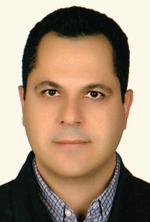Numerical investigation of dynamic and static properties of reservoir rocks
Mohsen Abdolghafurian A B , Bahman Joodi A , Stefan Iglauer A and Mohammad Sarmadivaleh AA Department of Petroleum Engineering, Curtin University, Kensington, WA 6151, Australia.
B Corresponding author. Email: mohsen.abdolghafurian@postgrad.curtin.edu.au
The APPEA Journal 58(2) 769-772 https://doi.org/10.1071/AJ17072
Accepted: 19 March 2018 Published: 28 May 2018
Abstract
A 3D geomechanical model describes the elastic and mechanical properties of rock as well as underground stresses. The static elastic parameters of rock are required to build a model. However, the elastic properties resulting from wireline logs, dynamic experiments and seismic inversion are dynamic and must be converted. Implementing an accurate conversion is an essential part of any 3D geomechanical model. The static and dynamic moduli can be obtained by numerical and experimental methods. Laboratory experiments are known to provide more realistic outcomes, but this method has its constraints such as availability of samples, time constraints and limitation of experimental resources. Other approaches such as numerical modelling can be used supplementarily to compute the mechanical behaviour and elastic parameters of sandstone.
This paper provides a literature review on past numerical modelling efforts to examine dynamic and static parameters of rocks. This is followed by an explanation of grain and core scale model and research methodology. A discrete element model-based numerical simulation is then carried out using Itasca’s particle flow code in 3D. The digital plug scale specimen was calibrated to replicate the experimental findings and was then used to establish a broad sensitivity analysis on the important parameters. The simulation results were in good agreement with experiments on sandstone specimens. The present study forms a foundation for building a more reliable 3D geomechanical model and consequently better field development, reducing risks and lowering costs.
Keywords: discrete element method, geomechanical model, numerical modelling, particle flow code, static parameter.

Mohsen Abdolghafurian is a PhD student at the Department of Petroleum Engineering, Curtin University, Western Australia. He is interested in the research area of seismic geomechanics. He was awarded a 2017 RTP Stipend Scholarship by the Australian Government. This was as a result of his outstanding proposed research program to develop a reliable algorithm to link the dynamic and static elastic parameters of reservoir rocks through experimental and numerical studies. |

Bahman Joodi is a PhD student at the Department of Petroleum Engineering, Curtin University, Western Australia. His current research focuses on the geomechanical application of the discrete element method. He holds a master’s degree in petroleum engineering from Curtin University of Technology. He is a senior petroleum engineer, with more than 10 years of experience. |

Stefan Iglauer is an associate professor in the Department of Petroleum Engineering at Curtin University. His research interests are in CO2 geo-storage, wettability and multiphase flow through porous rock with a focus on atomic to pore-scale processes. He has published more than 100 technical publications and holds a PhD in material science from Oxford Brookes University (UK) and an MSc in chemistry from the University of Paderborn (Germany). |

Mohammad Sarmadivaleh is a lecturer at the Department of Petroleum Engineering, Curtin University and leads the Petroleum Geo-mechanics Group (CPGG). He received his PhD from Curtin University in numerical and experimental studies on hydraulic fracturing in 2012. His research interests include hydraulic fracturing, sanding, geo-mechanical reservoir modelling and CO2 sequestration studies. He currently supervises 20 higher degrees by research students and participates in academic and industrial research projects. |
References
Abdolghafurian, M., Feng, R., Iglauer, S., Gurevich, B., and Sarmadivaleh, M. (2017). Experimental comparative investigation of dynamic and static properties of reservoir rocks. In ‘Proceedings of One Curtin International Postgraduate Conference, 10–12 December 2017’.Alassi, H. T. (2008). Modeling reservoir geomechanics using discrete element method: application to reservoir monitoring. PhD Thesis, Norwegian University of Science and Technology (NTNU).
Bobet, A. (2010). Numerical methods in geomechanics. Arabian Journal for Science and Engineering 35, 27–48.
Born, M., and Huang, K. (1954). ‘Dynamical Theory of Crystal Lattices.’ (Clarendon Press: Oxford)
Boutt, D. F., Cook, B. K., McPherson, B. J. O. L., and Williams, J. R. (2007). Direct simulation of fluid-solid mechanics in porous media using the discrete element and lattice-Boltzmann methods. Journal of Geophysical Research. Solid Earth 112, .
| Direct simulation of fluid-solid mechanics in porous media using the discrete element and lattice-Boltzmann methods.Crossref | GoogleScholarGoogle Scholar |
Bruno, M. S. (1994). Micromechanics of stress-induced permeability anisotropy and damage in sedimentary rock. Mechanics of Materials 18, 31–48.
| Micromechanics of stress-induced permeability anisotropy and damage in sedimentary rock.Crossref | GoogleScholarGoogle Scholar |
Cundall, P. A. (1971). A computer model for simulating progressive, large-scale movements in blocky rock systems. In ‘Symposium of International Society of Rock Mechanics’.
Cundall, P. A., and Strack, O. D. L. (1979). Discrete numerical model for granular assemblies. Geotechnique 29, 47–65.
| Discrete numerical model for granular assemblies.Crossref | GoogleScholarGoogle Scholar |
Holt, R. M., Kjølaas, J., Larsen, I., Li, L., Gotusso Pillitteri, A., and Sønstebø, E. F. (2005). Comparison between controlled laboratory experiments and discrete particle simulations of the mechanical behaviour of rock. International Journal of Rock Mechanics and Mining Sciences 42, 985–995.
| Comparison between controlled laboratory experiments and discrete particle simulations of the mechanical behaviour of rock.Crossref | GoogleScholarGoogle Scholar |
Holt, R. M., Fjær, E., and Bauer, A. (2013). Static and dynamic moduli – so equal, and yet so different. In ‘47th US Rock Mechanics/Geomechanics Symposium, 23–26 June 2013, San Francisco, CA’. (American Rock Mechanics Association.)
Holt, R. M., Bauer, A., Fjær, E., Stenebråten, J. F., Szewczyk, D., and Horsrud, P. (2015). Relating static and dynamic mechanical anisotropics of shale. In ‘49th US Rock Mechanics/Geomechanics Symposium, 28 June–1 July 2015, San Francisco, CA’. (American Rock Mechanics Association.)
Joodi, B. (2016). Using scratch tests for rock strength determination in Discrete Element Method. Paper presented at the 50th US Rock Mechanics/Geomechanics Symposium, 26–29 June 2016, Houston, TX. (American Rock Mechanics Association.)
Joodi, B. (2018). Geomechanical application of Discrete Element Method. PhD thesis, Curtin University, Perth, Australia.
Li, L., and Fjær, E. (2008). Investigation of the stress-dependence of static and dynamic moduli of sandstones using a discrete element method. Paper presented at the 42nd US Rock Mechanics – 2nd US – Canada Rock Mechanics Symposium 2008, San Francisco, CA.
Li, L., and Fjr, E. (2012). Modeling of stress-dependent static and dynamic moduli of weak sandstones. Journal of Geophysical Research. Solid Earth 117, .
| Modeling of stress-dependent static and dynamic moduli of weak sandstones.Crossref | GoogleScholarGoogle Scholar |
Li, L., and Holt, R. M. (2002). Particle scale reservoir mechanics. Oil & Gas Science and Technology 57, 525–538.
| Particle scale reservoir mechanics.Crossref | GoogleScholarGoogle Scholar |
Mossop, A. (2012). When to use static or dynamic moduli in geomechanical models. Paper presented at the 46th US Rock Mechanics/Geomechanics Symposium, 24–27 June 2012, Chicago, IL. (American Rock Mechanics Association.)
Nabipour, A. (2013). Experimental and numerical study of ultrasonic monitoring of hydraulic fracture propagation. Ph.D. Thesis, Curtin University, Perth, Australia.
O’Sullivan, C. (2011). ‘Particulate Discrete Element Modelling, a Geomechanics Perspective.’ (Spon Press: Oxford, UK.)
Pietruszczak, S., and Pande, G. N. (Eds) (1989). Numerical models in geomechanics. NUMOG III. In ‘Proceedings of the 3rd International Symposium on Numerical Models in Geomechanics, 8–11 May 1989, Niagara Falls, Canada’. (Elsevier Applied Science: London, New York.)
Potyondy, D. O., and Cundall, P. A. (2004). A bonded-particle model for rock. International Journal of Rock Mechanics and Mining Sciences 41, 1329–1364.
| A bonded-particle model for rock.Crossref | GoogleScholarGoogle Scholar |
Sarmadivaleh, M. (2012). Experimental and numerical study of interaction of a pre-existing natural interface and an induced hydraulic fracture. Ph.D. Thesis, Curtin University, Perth, Australia.


